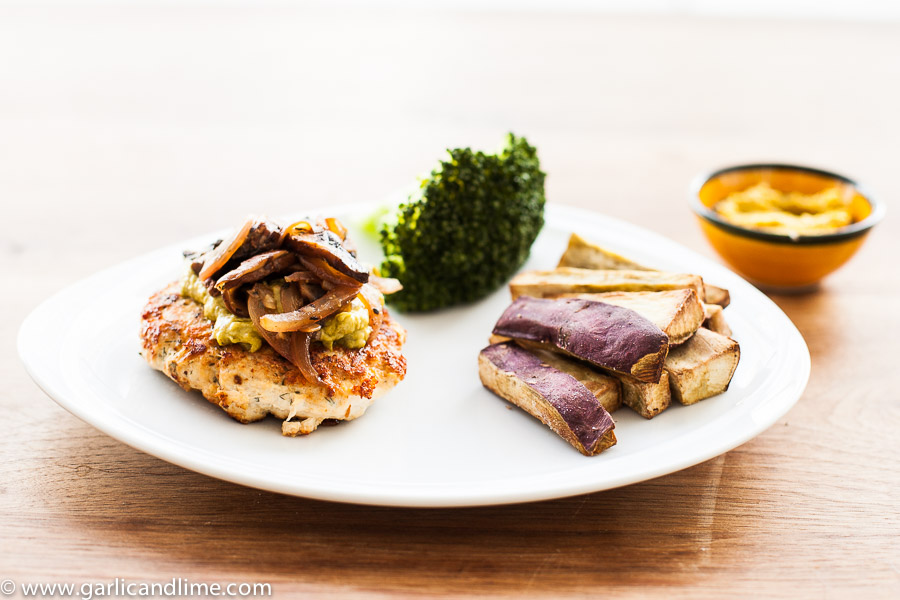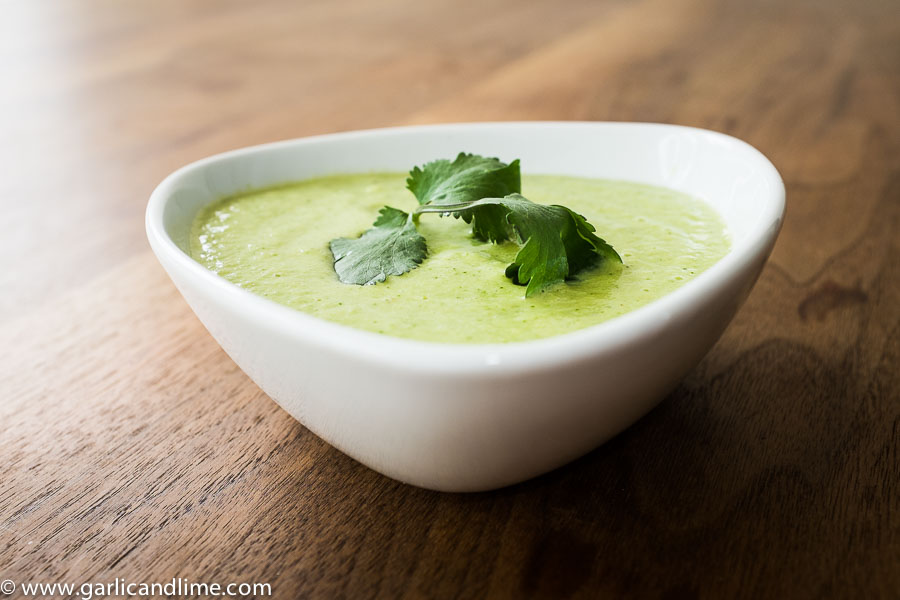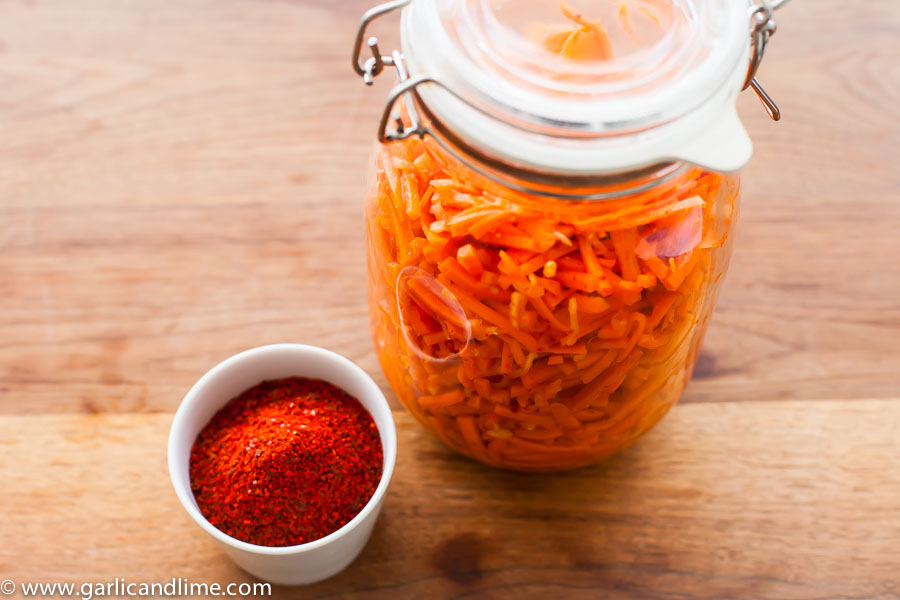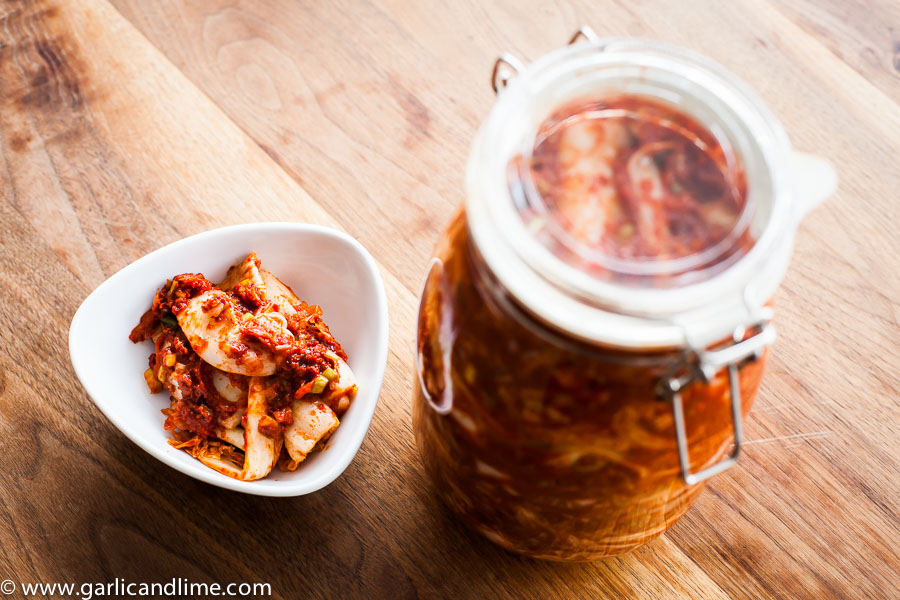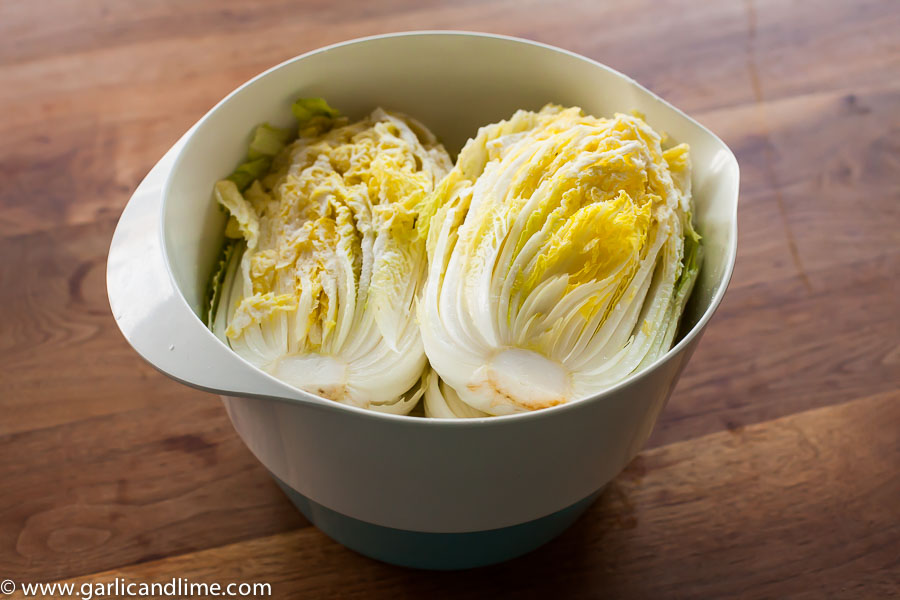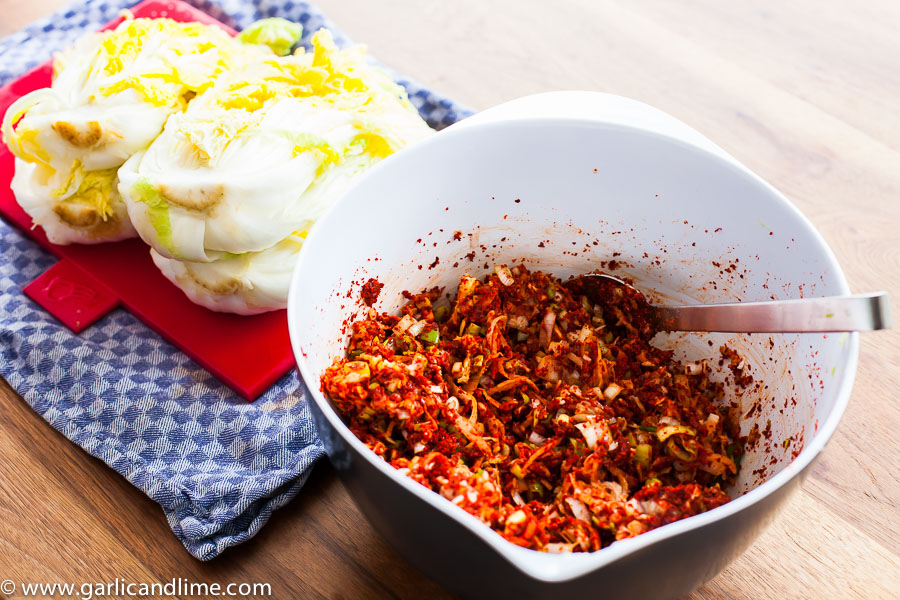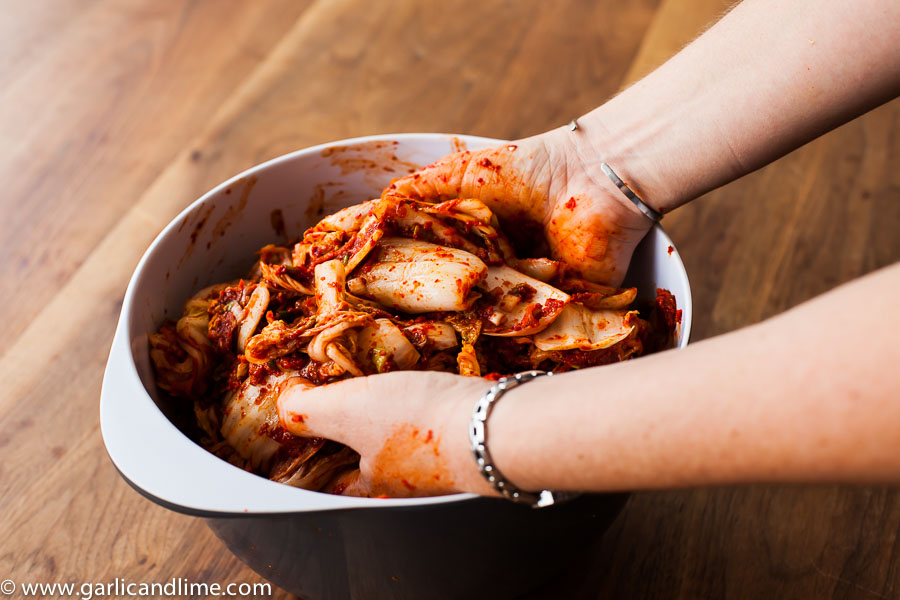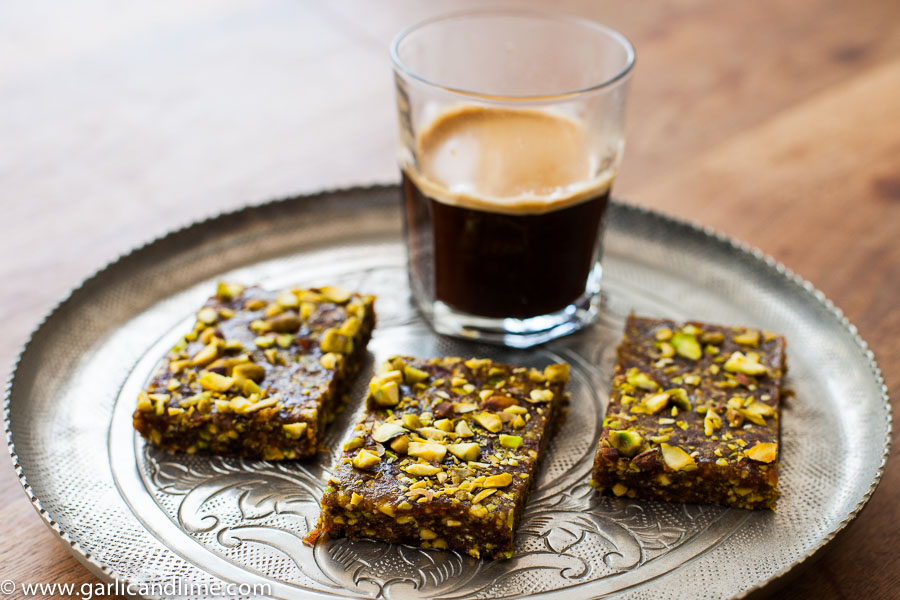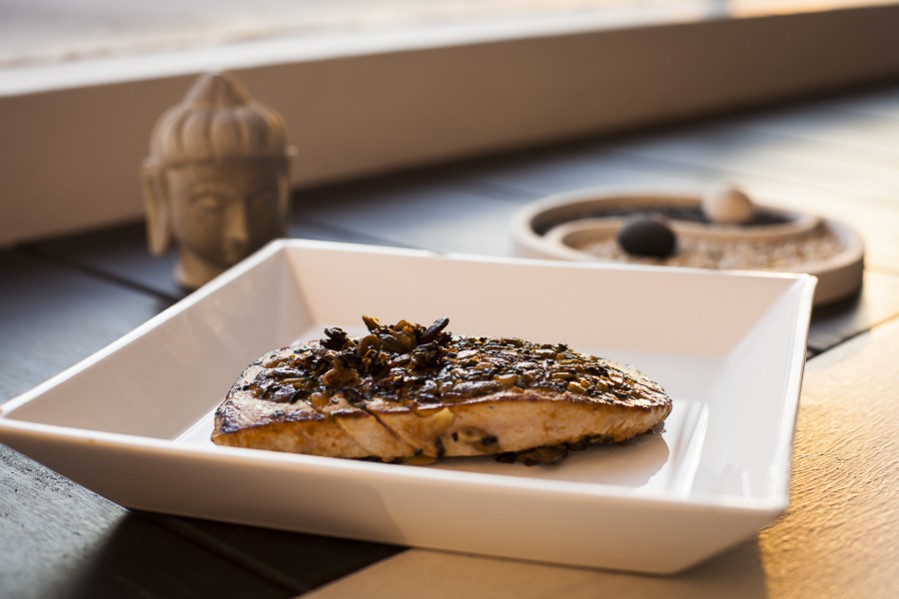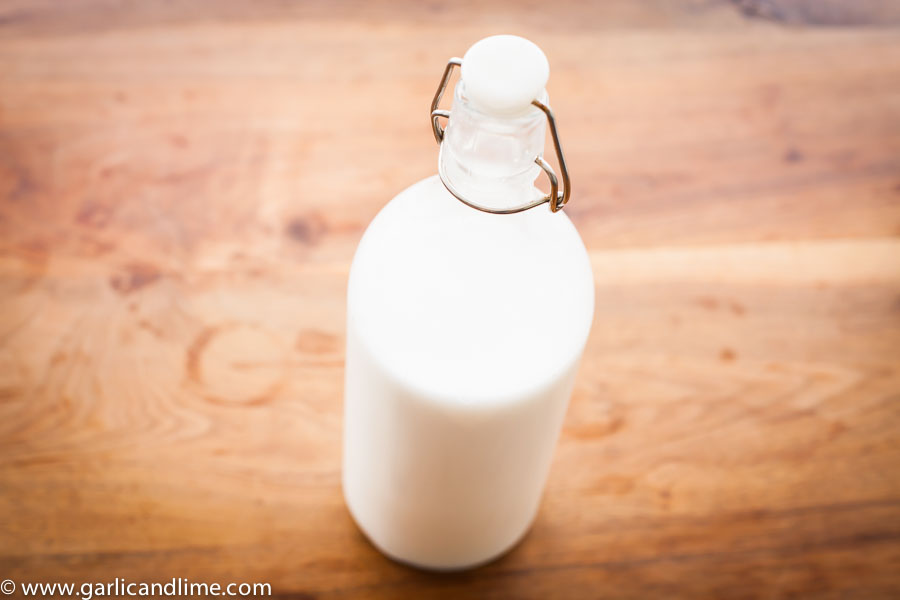
Recently for some strange reason we could not find any of the brand of coconut milk that we normally buy. It seemed to be sold out of all of the shops near our home. We looked at the labels of a lot of other brands of coconut milk, but were not happy with what we saw. In addition to a stabilizer, many had preservatives in them, and some other ingredients we didn’t understand.
Around the same time we ended up buying a whole pile of desiccated coconut on a shopping trip to the Indian wholesaler only to find when we got home that we already had quite a lot sitting at the back of the cupboard. OK, so let’s try combining the two and making our own coconut milk! Actually it is pretty simple, and using a blender it is also very fast. No more preservatives or stabilizers in this lot!
This recipe makes both thick and thin coconut milk, in the two presses of the coconut. I recommend that you press them into separate bowls and retain them separately for use in different recipes. The thick coconut milk can be used to replace cream, while the thin coconut milk can be used as a milk replacement in many dishes.
Ingredients
- 180g desiccated (shredded) coconut
- 1.25L hot water (5 cups)
Directions
- Put the desiccated coconut and half of the water (625ml / 2 1/2 cups) of hot water into a blender.
- Blend on high speed for 30 seconds.
- Pour the water and coconut mixture out over a fine sieve or a piece of muslin cloth (you could also use a fine tea cloth) with a bowl underneath.
- Squeeze all of the excess moisture out by squeezing the coconut in the cloth, or by pressing the coconut with the back of a spoon in the sieve.
- This first press of the coconut mixture will be thicker and creamier than the second press of the coconut mixture.
- Return the coconut to the blender and put the rest of the hot water in with it (625ml / 2 1/2 cups).
- Blend again on high for for 30 seconds
- Pour the second lot of water out over a fine sieve or piece of cloth, and a fresh bowl.
- This second press of the coconut mixture will be a thin coconut milk, but will normally be more than the first press of the coconut.
- Store the thick and thin coconut mixtures separately in airtight containers in the fridge, and use in soups, curries, or beverages.
Music to go with it…
Listen on Spotify: The Mountain Goats – Beat the Champ

